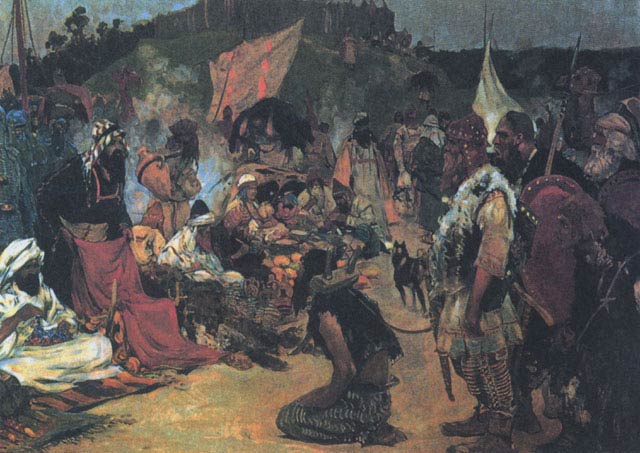 Slavery is a system in which one human being is legally as property to another. In this system, human beings are treated as property, and are purchased and sold as such. In the system of slavery, the slaves are owner’s property and are forced to work.
Slavery is a system in which one human being is legally as property to another. In this system, human beings are treated as property, and are purchased and sold as such. In the system of slavery, the slaves are owner’s property and are forced to work.
Slavery can be traced back to the early civilizations; it was documented in 1760 BC during the Sumer civilization, which was one of oldest civilizations. And, slavery was accepted as part of society in almost every ancient civilization, including ancient Greece, ancient Egypt, ancient India, ancient China, and the Roman Empire. The history of slavery starts from Sumer civilization and ends with the country Mauritania which was the last country to abolish slavery in 1981.
Slavery in Babylon – 18th Century BC
The Sumerian law code called Code of Ur-Nammu contains laws regarding slaves. This indicates, during Babylonian period slavery was an established institution. The laws for slaves were mentioned in the Code of Hammurabi, which includes death penalty for anyone who helps to escape slaves.
Slavery in Greece – From 7th Century BC
In ancient Greece, the records of slavery were traced back to Mycenaean Greece. As cities established in Ancient Greece, slavery became an important part of society and economy. Throughout the history of ancient Greece, slavery was common practice and an integral component of the society. Most ancient writers mentioned slavery in their writings: they considered it natural and necessary. It is estimated that, in ancient Greece, the majority of the people in Athens city owned at least one slave.
Slavery in Rome – From 2nd Century BC
The practice of slavery in Roman Empire was inherited from Greeks and Phoenicians. The 25% of population in Roman Empire consisted of slaves. The slaves in ancient Rome came from all over Europe and Mediterranean. Slave trading was a big business during this period. The trading took place between Roman Empire and the countries around the Mediterranean.
As the expansion of Roman Republic took place, the institution of slavery created and supplied slaves to work in Roman farms and households. In ancient Rome, the institution of slavery improved the Roman economy. Primarily, making war prisoners and defeated soldiers to work as slaves generated more revenue to the Roman Empire. The Roman armies used to bring captives back as part of their reward. Such war captives were made to work as slaves, who have performed many domestic services and worked as manual labor on farms and in mines. In the second century BC, plantation slavery started in Rome. In ancient Rome, Spartacus led series of slave revolts in the city called Sicily.
Slavery in the Middle Ages – 6th to 15th Century AD
During this period, the Roman Empire collapsed in the west, and slavery continued in Mediterranean countries. Chaos and invasions increased the slavery throughout Europe in the middle ages. During the middle ages, slavery was common in both Christian and Muslim lands. In Arabia, slavery was an accepted part of society during the time of the prophet Muhammad, in the 7th century. Slavery during middle ages has several sources. Vikings raided across Europe and captured slaves. They kept some slaves for themselves as servants and rest would be sold in the Islamic markets. The Viking slave trade gradually came to an end in 11th century. In 1066 AD, Normans invaded English countries and made slaves of the English gentry and sent them to Spain.
Slavery After 15th Century
In 15th century, Portuguese were the first to bring European ships in contact with sub-Saharan Africa to start slave trading. Over a period of time British also became involved in slave trading. By this time, slavery had spread and established in American colonies. The Atlantic triangular slave trade in 18th century was an economic elegance to the owners of slave ships.
In 17th century, slavery abolitionist movement began in England. The Slavery Abolition Act 1833 was passed in the parliament of United Kingdom which abolished the slavery throughout the British Empire. On 1st January 1863, the United States President Lincoln issued his Emancipation Proclamation, which declares freedom for all people held in slavery in rebel states. The Emancipation Proclamation urges liberated slaves to refrain from violence, and it announced that freed slaves will be welcome to serve in United States Army and Navy. In the United States, slavery was officially abolished in 1865 by enactment of the 13th amendment to the constitution. After that, gradually all the countries abolished slavery. In 1981, Mauritania was the last country to abolish slavery.